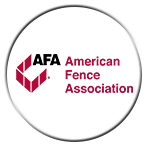Your fence plays a vital part in shielding your property from prying eyes and unwanted arrivals. Your fence is meant to protect your property, but who will protect your fence? Does your insurance cover your fence from damage or wear and tear? Of course every homeowner’s policy is unique, but here are a few basic things to understand about your homeowners insurance and your fence.

Are You Covered?
The information about your fence coverage is typically included in the “Other Structures” or “Coverage B” section of your policy. Keep in mind that your provider may call it something else. Structures other than the home are usually covered up to 10% of the total coverage of your home. If your home is insured up to $250,000, your other structures are likely covered up to $25,000.
The rule of thumb with other structures—including your fence—is that damage is covered up to the limits of the rest of your policy. For example, if your home is covered against vandalism and storm damage (as most homeowner’s insurance policies include), so is your fence. Flood and earthquake damage are not covered unless you have specifically added flood or earthquake protection for the rest of your property. If a cause of damage is not covered for the rest of your house, it is not covered for your fence.
In Case of Emergency, Break Glass
The two biggest causes of fence damage that are covered by standard homeowners insurance are storm and vandalism damage. Not usually covered is normal wear and tear, like nicks from a lawnmower or water stains from sprinklers, or biological damage from fungus or mold. The kinds of damage covered for the primary structure on your policy should be covered for your fence.
Tree Damage and Homeowners Insurance
Falling trees are covered if the tree did not have any structural indication of weakness. If the tree or its limbs were already weakened through negligence or time, the damage to your fence may not be covered as it can be considered a preventable incident. If the tree is in your neighbor’s yard, the insurance company will likely hold your neighbor accountable for damages. Keep in mind that even with a neighbor’s tree, the same rules about poor maintenance apply.
Vandalism and Homeowners Insurance
In the case that someone crashes his or her car into your fence, your homeowners insurance policy should cover the damages. You may be able to avoid a homeowner’s claim altogether, however, if you can file a claim against the at-fault driver’s property damage liability car insurance, which drivers are required to have in the state of Utah. Property liability will generally cover a minimum of $10,000 worth of damage. If you do end up filing a claim with your homeowners insurance provider, also doing so against the driver’s liability insurance might bridge the gap left if your homeowners policy won’t cover the full cost. If your car crashes into your own fence, no such help is available.

My Fence is Damaged—Now What?
If you discover that your fence is damaged, the very first thing you should do is take pictures. The insurer will look to these to confirm the cause of the damage, so do not clean up at all before capturing the scene. In cases of reckless driving or deliberate vandalism, filing a police report can back up your claim. Record the time of the incident and any other relevant details.
Your next step should be to get an estimate of the damage and repairs from a contractor. If your insurance deductible is higher than the estimate for restoring your fence, you may consider covering the repairs yourself without filing a claim. When pricing out your options, keep in mind that making a claim will increase the premiums of your homeowners insurance.
If you decide to take the problem to your insurance provider, you can now file a claim. Your provider will ask you a series of questions about the circumstances behind the damage and its extent. You will also discuss the specifics of your coverage based on your policy. You will receive forms that need to be filled out, and your provider will send over someone to see the damage in person. Provide the representative with a police report if you have one for the damage.
After the inspection, your homeowners insurance provider will let you know the dollar amount they are willing to provide to cover repairs. Sometimes it is possible to negotiate for better compensation, especially if you have a contractor’s estimate. When you and your provider arrive at a reasonable settlement, you can begin repairs. At All Over Fence, we are eager to help restore the beauty and structural integrity of your fence so it can effectively protect your property. Give us a call for an estimate today.

















